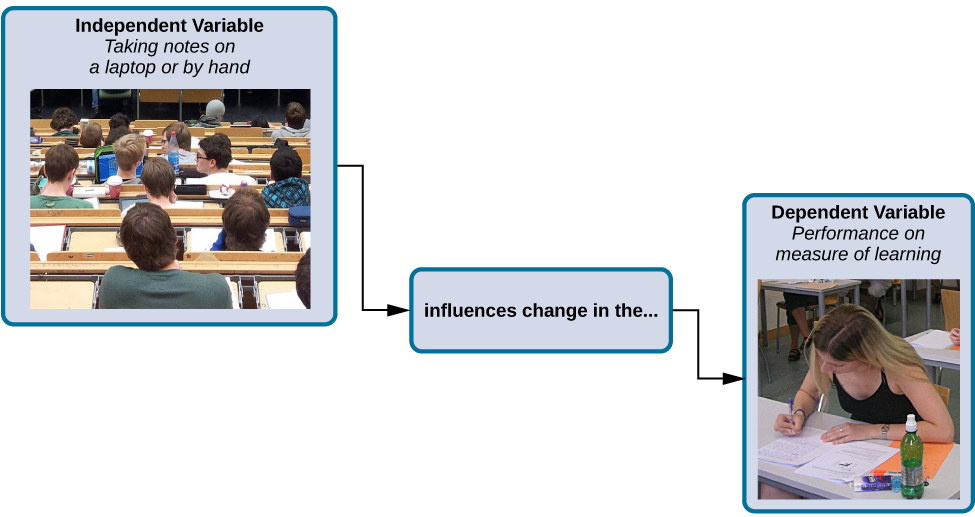Independent and Dependent Variables
In a research experiment, we strive to study whether changes in one thing cause changes in another. To achieve this, we must pay attention to two important variables, or things that can be changed: the independent variable and the dependent variable.
Independent and Dependent Variables
An independent variable is manipulated or controlled by the experimenter. In a well-designed experimental study, the independent variable is the only important difference between the experimental and control groups. In our example of how technology use in the classroom affects learning, the independent variable is the type of learning by participants in the study.
A dependent variable is what the researcher measures to see the effect of the independent variable. In our example, the dependent variable is the learning exhibited by our participants.

We expect that the dependent variable will change as a function of the independent variable. In other words, the dependent variable depends on the independent variable. A good way to think about the relationship between the independent and dependent variables is with this question: what effect does the independent variable have on the dependent variable? Returning to our example, what effect does the math computer program online have on learning? Imagine researchers are studying the effect of watching violent tv shows on aggressive behaviors. The violent show would be the independent variable, while the physical aggression displayed on the playground would be the dependent variable.
Confounding Variables
confounding variable
A confounding variable is a variable that is not controlled for in an experiment, but could potentially influence the relationship between the independent and dependent variables—can produce misleading results by making it appear that a relationship exists between the independent and dependent variables when in fact it does not.
You can find confounding variables by thinking about other influences that might affect the outcomes of the study. For example, in studying the effect of watching aggressive shows on playground aggression, confounding variables may include parental supervision, weather, gender, time of day, what activities students did before the playground, etc. In order to reduce the influence of confounding variables, it is important to carefully control for as many variables as possible in the experimental design.
Experiments: Issues to Consider
While experiments allow scientists to make cause-and-effect claims, they are not without problems. True experiments require the experimenter to manipulate an independent variable, and that can complicate many questions that psychologists might want to address. For instance, imagine that you want to know what effect sex (the independent variable) has on spatial memory (the dependent variable). Although you can certainly look for differences between males and females on a task that taps into spatial memory, you cannot directly control a person’s sex. We categorize this type of research approach as quasi-experimental and recognize that we cannot make cause-and-effect claims in these circumstances.
Experimenters are also limited by ethical constraints. For instance, you would not be able to conduct an experiment designed to determine if experiencing abuse as a child leads to lower levels of self-esteem among adults. To conduct such an experiment, you would need to randomly assign some experimental participants to a group that receives abuse, and that experiment would be unethical.